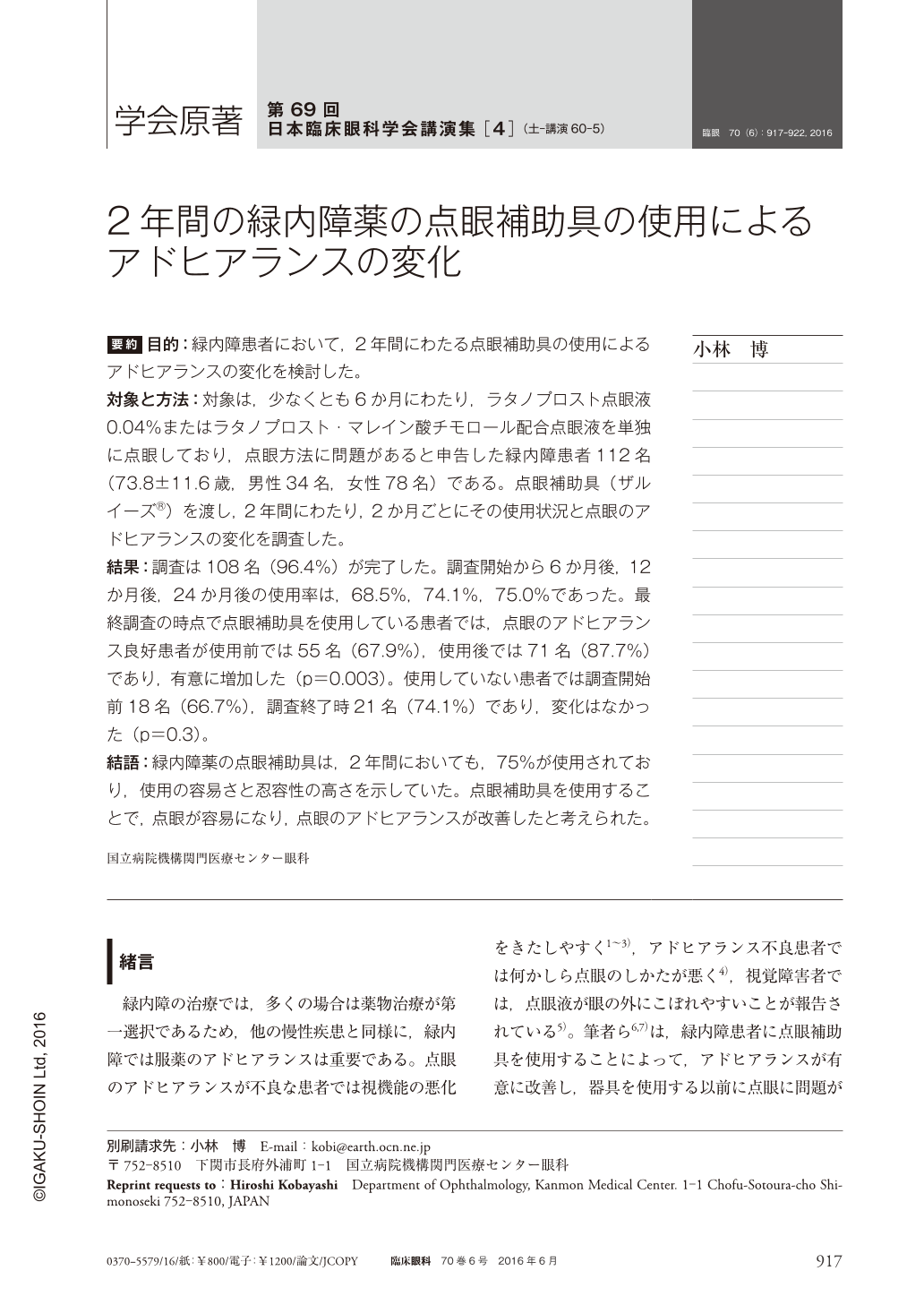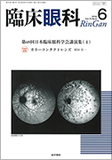Japanese
English
- 有料閲覧
- Abstract 文献概要
- 1ページ目 Look Inside
- 参考文献 Reference
要約 目的:緑内障患者において,2年間にわたる点眼補助具の使用によるアドヒアランスの変化を検討した。
対象と方法:対象は,少なくとも6か月にわたり,ラタノプロスト点眼液0.04%またはラタノプロスト・マレイン酸チモロール配合点眼液を単独に点眼しており,点眼方法に問題があると申告した緑内障患者112名(73.8±11.6歳,男性34名,女性78名)である。点眼補助具(ザルイーズ®)を渡し,2年間にわたり,2か月ごとにその使用状況と点眼のアドヒアランスの変化を調査した。
結果:調査は108名(96.4%)が完了した。調査開始から6か月後,12か月後,24か月後の使用率は,68.5%,74.1%,75.0%であった。最終調査の時点で点眼補助具を使用している患者では,点眼のアドヒアランス良好患者が使用前では55名(67.9%),使用後では71名(87.7%)であり,有意に増加した(p=0.003)。使用していない患者では調査開始前18名(66.7%),調査終了時21名(74.1%)であり,変化はなかった(p=0.3)。
結語:緑内障薬の点眼補助具は,2年間においても,75%が使用されており,使用の容易さと忍容性の高さを示していた。点眼補助具を使用することで,点眼が容易になり,点眼のアドヒアランスが改善したと考えられた。
Abstract Purpose: To report changes in adherence to topical anti-glaucoma drugs with the use of an eyedrop aid for 2 years.
Methods: Participants in this study were 112 glaucoma patients who had been prescribed with either latanoprost 0.04% or a fixed combination of latanoprost 0.04% and timolol 0.5% for at least 6 months and who complained difficulty with instilling eye drops. There were 34 men and 78 women with mean age of 73.8±11.7 years. An eye drop aid(Xal-Ease, Pfeizer)was given to each patient. Use of this device and adherence to the administration of anti-glaucoma drugs were monitored for 24 months after the device was provided.
Results: One hundred eight patients(96.4%)finished the study. The proportion of patients used the device was 68.5% at 6 months, 74.1% at 1 year and 75.0% at 2 years. There were 55 good adherents(67.9%)and 71(87.7%)at baseline and at 24 months(p=0.003), respectively, among patients who used the device, compared with 18(66.7%)and 21(74.1%)among those who did not(p=0.3).
Conclusion: The eye drop aid was used by 75% of patients for 2 years, showing its ease of use and tolerability. Use of this eye drop aid may help patients improve adherence to topical medication regimen.

Copyright © 2016, Igaku-Shoin Ltd. All rights reserved.


